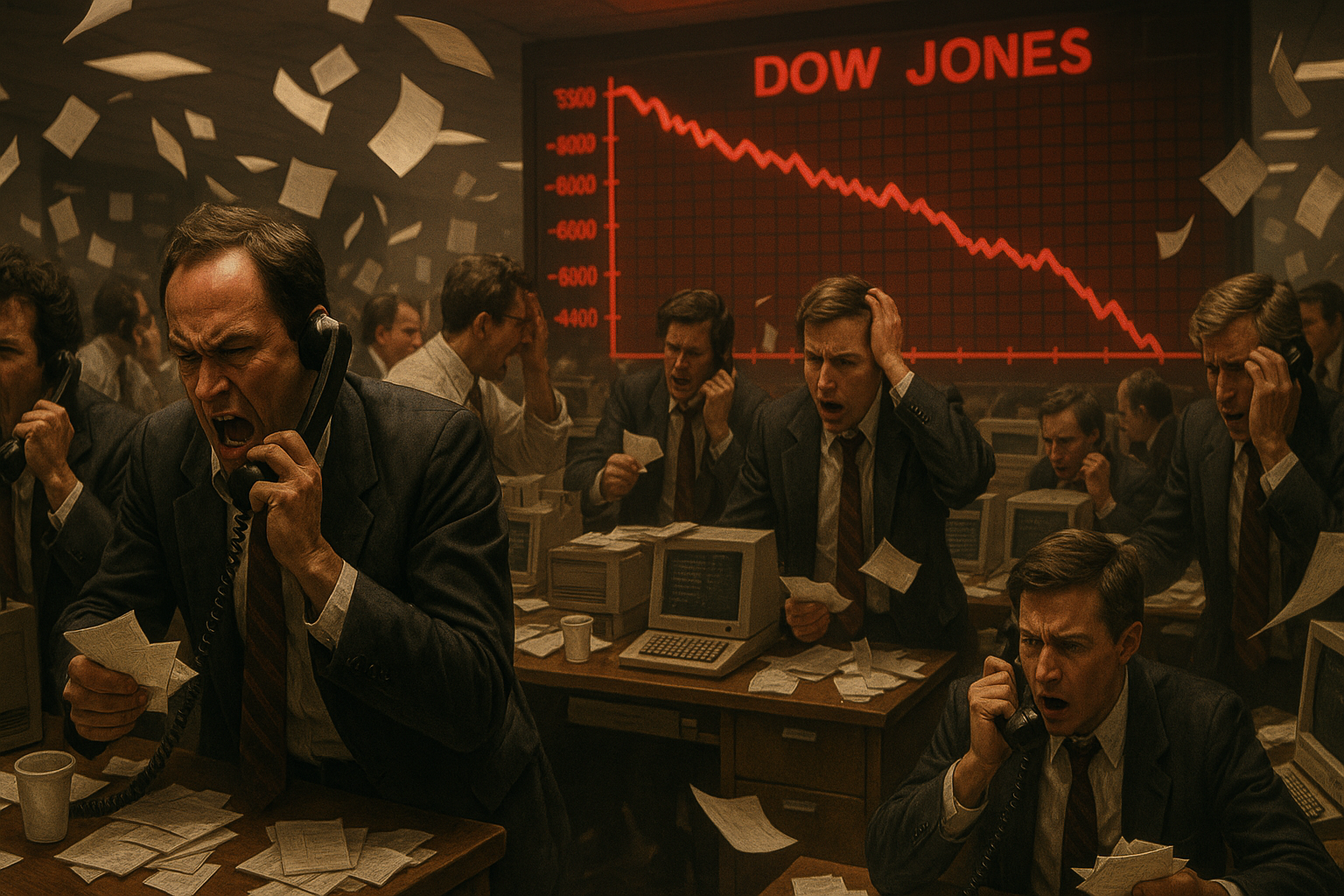Today marks 38 years since Black Monday—that gut-wrenching day when the Dow Jones plummeted a mind-boggling 22.6% in a single trading session. For perspective, that makes our recent market "hiccups" look about as threatening as a puppy's bark.
I've spoken with several veteran traders who lived through that October 19th nightmare back in '87. Their memories remain startlingly vivid, even after nearly four decades.
"The phones never stopped. Not for a second," recalls Martin Friedman, who was just two years into his trading career at Salomon Brothers. "It wasn't just a crash—it was mass financial hysteria."
Having covered market disruptions for years, I've seen my share of panics, but nothing approaches the sheer existential dread that Black Monday unleashed. The market didn't just drop; it evaporated.
Paper tickets piled up like autumn leaves. Quotron machines (remember those clunky beasts?) lagged so badly they became practically useless. It was, as one trader described it to me, "watching the financial world burn in real-time."
What makes Black Monday so fascinating—and still relevant—isn't just the scale of destruction but how it fundamentally rewired market psychology. The crash created a kind of collective PTSD among an entire generation of financial professionals.
"Before Black Monday, we thought we understood risk," says Janet Wilson, who now manages a hedge fund after surviving that day as a junior analyst. "After? We realized we didn't know a damn thing... I mean, not a thing about how markets really behave under extreme stress."
The cruel irony? The crash happened amid what seemed like perfectly robust economic conditions. GDP was growing at a healthy clip. Inflation appeared tamed. Corporate earnings weren't terrible.
Sound familiar?
Look, the technical culprit was supposedly portfolio insurance—that supposedly brilliant innovation designed to protect institutional investors from downside risk. In practice, it created the financial equivalent of a multi-car highway pileup. As markets fell, these automated programs sold futures, pushing prices lower, triggering more selling... and down went the house of cards.
(This is why so many old-school traders remain skeptical of today's algorithmic trading systems. They've seen this movie before, and they didn't like the ending.)
One floor trader who prefers anonymity told me years later over drinks: "The crash didn't just break the market. It broke our understanding of what a market even is." There's a profound truth there worth unpacking.
The regulatory responses—circuit breakers, enhanced clearing procedures, coordination mechanisms—have certainly made markets more resilient to technical meltdowns. But here's the uncomfortable question: Have they eliminated the fundamental psychological fragility that occurs when market participants collectively lose faith?
I doubt it.
Perhaps the most enduring lesson isn't about market mechanics or regulatory frameworks at all. It's about human psychology. Markets can detach from fundamental reality with breathtaking speed when fear takes hold. That was true in 1987, painfully true in 2008, and—despite our fancy Bloomberg terminals and AI-powered analytics—remains true today.
The flash crash of 2010, though briefer, showed us that even in our high-frequency world, liquidity can vanish faster than free donuts in a newsroom. (Trust me on that one.)
For those who experienced Black Monday firsthand, it created a dividing line—between those who merely read about extreme market volatility and those who felt it in their bones. Some became perpetually cautious, others learned to see market panics as rare buying opportunities.
The crash reminds us of something Wall Street's mathematical models still struggle to fully capture: markets aren't just rational systems but psychological constructs built on that most unpredictable foundation—human emotion.
And that, my friends, is why Black Monday still matters, 38 years later.
